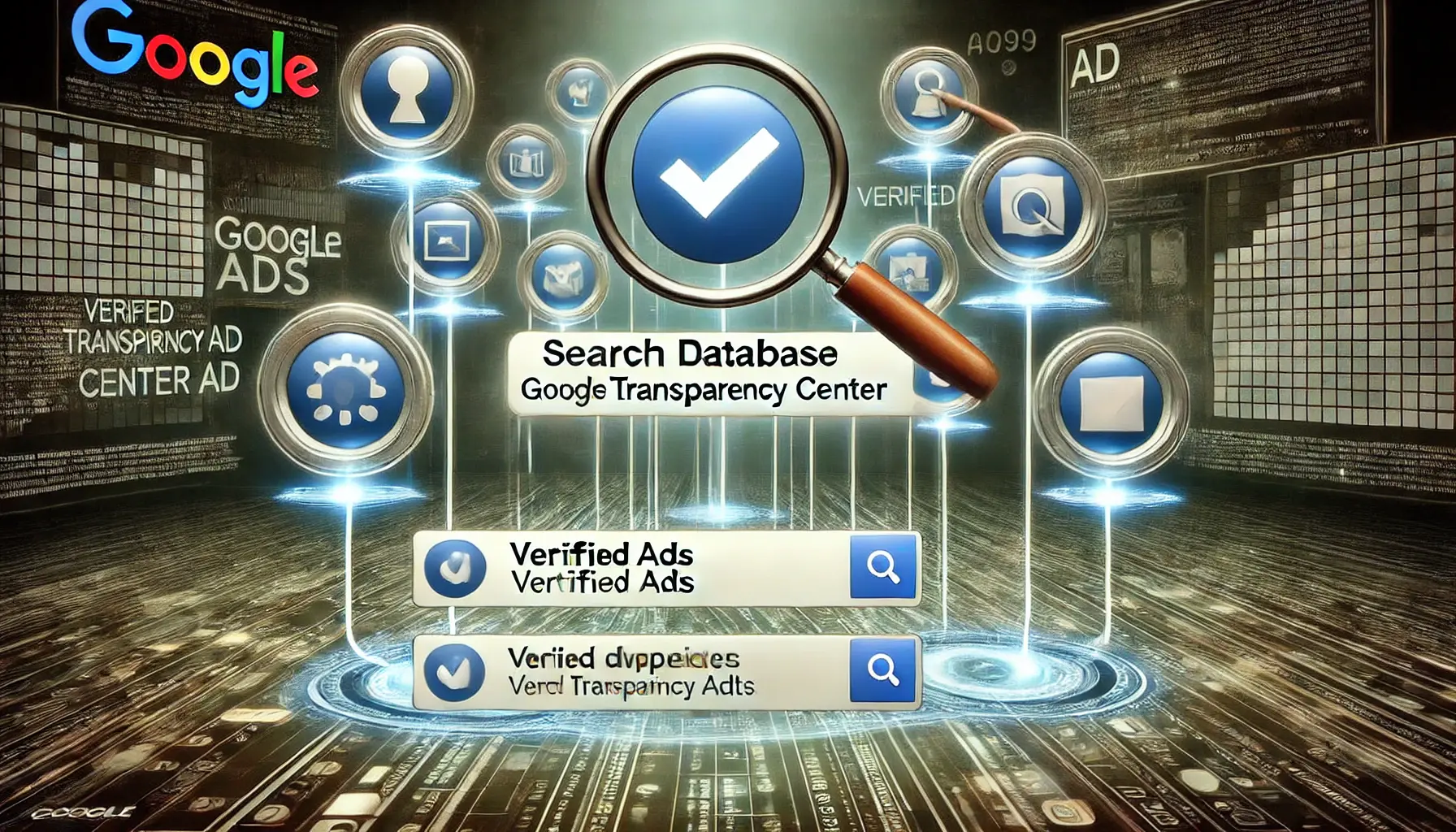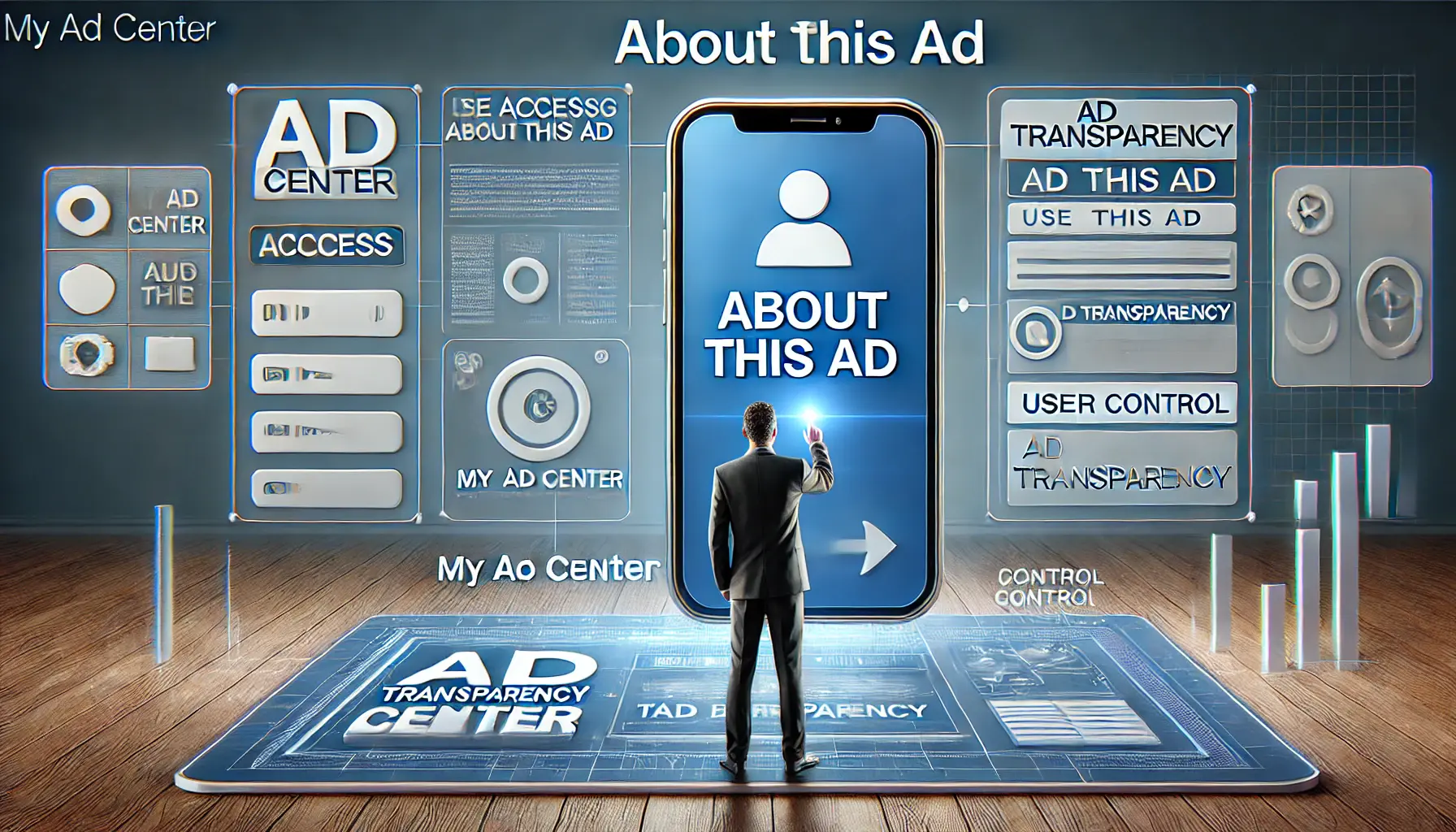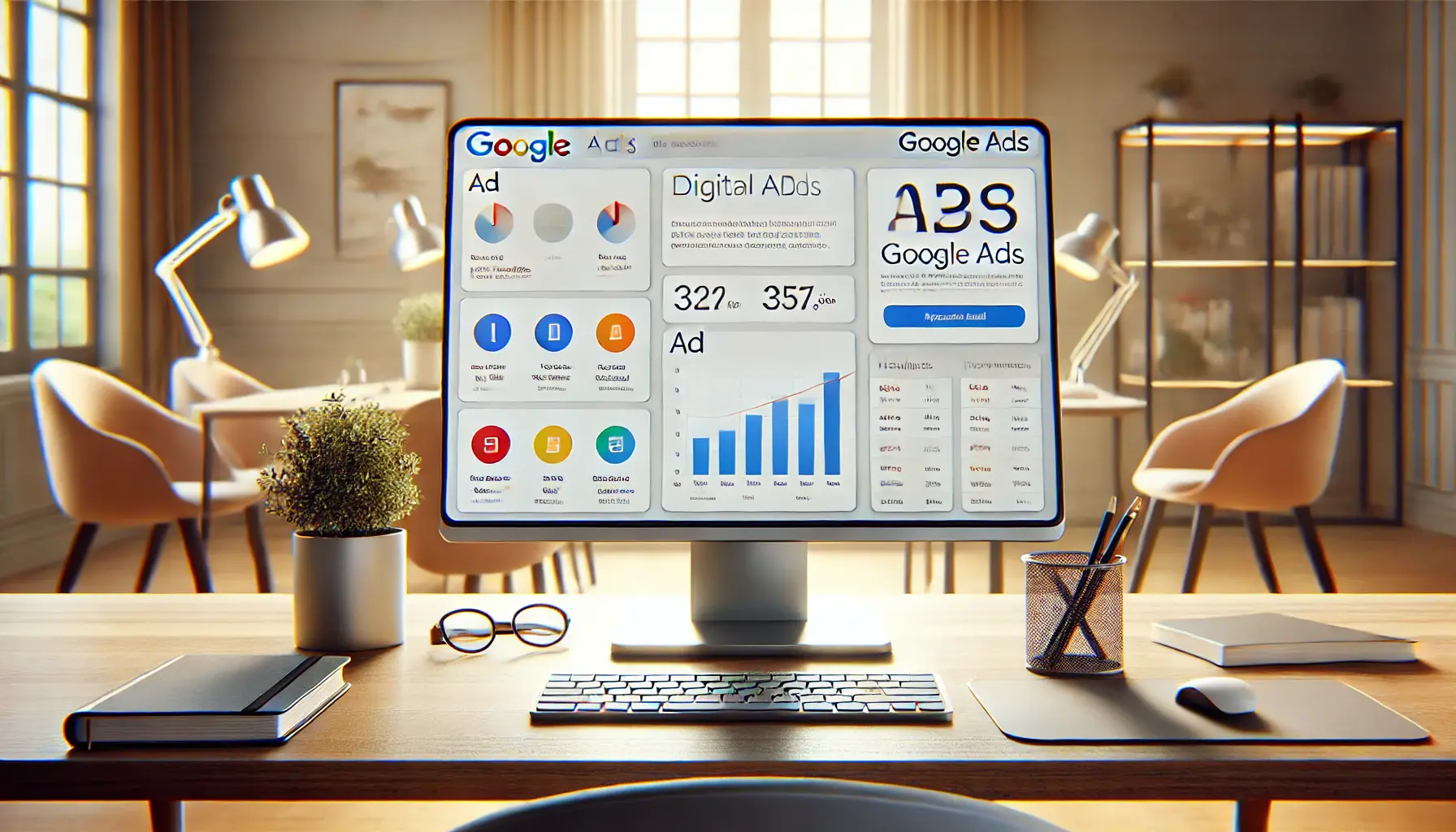In today’s digital age, transparencyThe practice of being open and honest about processes or information. in advertising is more crucial than ever.
With the vast number of ads we encounter daily, wouldn’t it be helpful to know more about the sources behind them?
Enter Google’s Ad Transparency Center—a tool designed to shed light on the ads you see across Google’s platforms.
Let’s delve into what this center offers and how it can benefit you.
- Introduction to Google’s Ad Transparency Center
- Key Features of the Ad Transparency Center
- Benefits for Users and Advertisers
- How to Navigate and Utilize the Ad Transparency Center
- The Future of Digital Advertising with the Ad Transparency Center
- Ad Transparency Center: A New Era in Digital Advertising
- Frequently Asked Questions about the Ad Transparency Center
Introduction to Google’s Ad Transparency Center
Google’s Ad Transparency Center is an easy-to-use platform that lets users have in-depth information on ads shown across Google Search, YouTube, and Display networks.
Introduced with the goal of providing transparency, it helps users like you to know the source and intention behind the ad that pops up.
Imagine you’re browsing online and come across an ad for a product that piques your interest.
Naturally, you’d want to know more about the advertiser before making any decisions.
The Ad Transparency Center empowers you to do just that by offering comprehensive information about advertisers and their campaigns.

A depiction of Google’s Ad Transparency Center showcasing its seamless digital network and focus on transparency.
Overview of the Ad Transparency Center
The Ad Transparency Center serves as a centralized hub where you can:
- Search for specific advertisers to view all their active and past ads.
- Access information about where ads were shown and in which formats.
- Verify advertiser identities to ensure legitimacy.
This transparency not only builds trust but also helps you make informed decisions about the products and services you choose to engage with.

A visualization of Google’s Ad Transparency Center, highlighting its purpose to foster trust and transparency.
Purpose and Objectives of the Platform
The Ad Transparency Center is a tool to help create a more transparent and trustworthy ecosystemA system or community of interacting elements, often used metaphorically for interconnected digital systems. of advertising.
By providing you with more detailed information about who the advertisers are and what they’re advertising, Google hopes to:
- Increase user trust by making ad sourcing more transparent.
- Give users more informed choices about the ads they engage with.
- Hold advertisers responsible for the content they advertise.
Have you ever wondered why a particular ad was shown to you or who is behind it?
The Ad Transparency Center answers these questions, giving you greater control over your online experience.

A visualization of the global launch and accessibility of Google’s Ad Transparency Center, connecting regions with glowing lines.
Launch Timeline and Global Availability
Back in March 2023, Google made an important step toward ad transparency by announcing the Ad Transparency Center.
The platform is being rolled out to all parts of the world.
You can access it directly or through My Ad CenterA Google feature that allows users to manage their ad preferences and settings. via a three-dot menu that appears next to the ads.
By doing so, Google managed to respond in advance to the increasing demands for more transparency in digital advertising so you would never be left in the dark about any ads that come your way.
The Ad Transparency Center is designed to provide you with information to navigate the complex digital advertising space.
The better your understanding of its features and goals, the better you are positioned to appreciate efforts directed towards a more transparent online community.
The Ad Transparency Center empowers users to make informed decisions about the ads they encounter, building trust and transparency in the digital advertising ecosystem.

A visual representation of the core features of the Ad Transparency Center, showcasing its transparency and user empowerment elements.
Key Features of the Ad Transparency Center
Google’s Ad Transparency Center offers several features designed to provide you with comprehensive insights into the advertisements you encounter across its platforms.
Understanding these features can help you make more informed decisions about the ads you engage with.

A visualization of the searchable database for verified ads, emphasizing transparency and user-friendly search features.
Searchable Database of Verified Ads
The Ad Transparency Center serves as a centralized hub where you can:
- Search for specific advertisers to view all their active and past ads.
- Access information about where ads were shown and in which formats.
- Verify advertiser identities to ensure legitimacy.
This transparency not only builds trust but also helps you make informed decisions about the products and services you choose to engage with.

A depiction of the advertiser verification process within Google’s Ad Transparency Center, emphasizing security and transparency.
Advertiser Information and Verification Status
One of the key features of the Ad Transparency Center is the ability to access detailed information about advertisers.
You can see the names of advertisers, their country of origin, and other pertinent details.
This fosters trust by providing you with a clearer understanding of who is behind the ads you see.

A depiction of the different ad formats and display details in Google’s Ad Transparency Center, showcasing the diversity of ad types.
Ad Format and Display Details
The Ad Transparency Center gives an overview of the creative elementsComponents such as images, headlines, or descriptions used in an advertisement. in the ads, including images, headlines, and descriptions currently used in ad copies.
This allows for a much better understanding of the content being presented.
By applying these features, you can have a better view of all the ads you are targeting, thereby making the whole online ad experience more transparent and well-informed.
The searchable database, advertiser verificationThe process of confirming the authenticity or accuracy of information., and insights into ad formats make the Ad Transparency Center a powerful tool for users and advertisers alike.

A balanced depiction of how both users and advertisers benefit from the Ad Transparency Center’s transparency and insights.
Benefits for Users and Advertisers
The Ad Transparency Center offers significant advantages to both users and advertisers, fostering a more transparent and trustworthy digital advertising ecosystem.

A representation of how enhanced user trust and transparency are achieved in the Ad Transparency Center, emphasizing security and empowerment.
Enhanced User Trust and Ad Transparency
For users, the Ad Transparency Center provides:
- Increased transparency about the ads they encounter, including information about the advertiser’s identity and ad content.
- Empowerment to make informed decisions by understanding who is behind the ads and their intentions.
- Improved control over their ad experience, with options to like, block, or report ads through My Ad Center.
This transparency builds trust, as users feel more secure knowing the origins and purposes of the ads presented to them.

A depiction of advertisers utilizing the Ad Transparency Center for competitive analysis, focusing on data-driven strategy and insights.
Competitive Analysis Opportunities for Advertisers
Advertisers can leverage the Ad Transparency Center to:
- Analyze competitors’ ad strategies by viewing their active and past ads, gaining insights into design and messaging.
- Identify industry trends and adapt their campaigns to align with successful patterns observed in the market.
- Enhance their own ad performance by learning from competitors’ successes and avoiding their pitfalls.
This competitive analysis enables advertisers to refine their strategies and create more effective campaigns.

A depiction of how users can customize their ad experience in Google’s Ad Transparency Center, emphasizing personalization and control.
Improved Ad Experience Customization
The Ad Transparency Center, in conjunction with My Ad Center, allows users to:
- Manage ad preferences by selecting topics of interest and opting out of sensitive categories.
- Control the types of ads displayed to make ads more tailored and relevant for a personalized advertising experience.
- Provide feedback on ads to improve the overall quality and relevance of advertising.
This level of personalization benefits both users and advertisers by enabling better ways to reach the targeted audience.
By offering these benefits, the Ad Transparency Center makes the digital advertising environment more transparent, trustworthy, and effective for all stakeholders involved.
- Users gain control and insights about the ads they see, fostering trust.
- Advertisers can analyze competitors and improve their strategies based on observed trends.

A depiction of the user-friendly navigation and functionality of Google’s Ad Transparency Center, showcasing its interactive features.
How to Navigate and Utilize the Ad Transparency Center
Google’s Ad Transparency Center is a user-friendly platform that provides detailed insights into the advertisements displayed across Google Search, YouTube, and Display networks.
Understanding how to navigate and utilize this tool can enhance your online experience and empower you to make informed decisions about the ads you encounter.

A depiction of how users can access the Ad Transparency Center through My Ad Center, with an emphasis on simplicity and control.
Accessing the Platform via My Ad Center
To access the Ad Transparency Center, follow these steps:
- Direct Access: Visit the Ads Transparency Center directly at adstransparency.google.com.
- Through My Ad Center: Click on the three-dot menu next to any ad you encounter on Google platforms and select ‘About this ad’ to be directed to the Ad Transparency Center.
These methods seamlessly introduce you to the platform, where you can explore advertiser information with ease.

A depiction of the search functionality within the Ad Transparency Center, showing a user looking for specific advertisers and ad details.
Searching for Specific Advertisers or Ads
Once inside the Ad Transparency Center, you can search for specific advertisers or ads by:
- Using the Search Bar: Enter the advertiser’s name or website URL to view their active and past ads.
- Applying Filters: Narrow down results by ad format (e.g., text, image, video), region, and date range to find relevant ads.
This functionality enables you to gain insights into advertisers’ strategies and the content they promote.

A depiction of how ad data and metrics are interpreted within the Ad Transparency Center, highlighting key performance indicators and engagement metrics.
Interpreting Ad Data and Metrics
When viewing ads in the Ad Transparency Center, you’ll find valuable information, including:
- Ad Format: Identifies whether the ad is a text, image, or video format.
- Regions Displayed: Shows the geographical locations where the ad was shown.
- Last Date Shown: Indicates the most recent date the ad was displayed.
Understanding these metricsQuantitative measures used to assess performance or outcomes. helps you assess the reach and relevance of advertisements, providing a clearer picture of advertising practices.
By effectively navigating and utilizing the Ad Transparency Center, you can enhance your understanding of the digital advertising landscape, leading to a more informed and personalized online experience.
Access the platform through My Ad Center or directly via adstransparency.google.com, allowing seamless exploration of ad data and metrics.

A depiction of the future of digital advertising with the Ad Transparency Center, showcasing the evolution of advertising through innovation and transparency.
The Future of Digital Advertising with the Ad Transparency Center
The introduction of Google’s Ad Transparency Center marks a pivotal shift in the digital advertising landscape, emphasizing transparency, user empowerment, and ethical advertising practices.
This evolution is set to redefine how advertisers and users interact within the digital ecosystem.

A depiction of the shift towards user-centric advertising, highlighting the control users have over personalized ad experiences.
Shifting Towards User-Centric Advertising
With the Ad Transparency Center, there is a clear movement towards prioritizing user needs and preferences.
Users now have access to detailed information about the ads they encounter, enabling them to make informed decisions and exercise greater control over their online experiences.
This shift fosters a more trustworthy and user-friendly advertising environment.

A depiction of ethical advertising practices, emphasizing trust, security, and fairness in the digital advertising landscape.
Encouraging Ethical Advertising Practices
The increased transparency provided by the Ad Transparency Center holds advertisers accountable for their content.
Advertisers are encouraged to adopt ethical practices, ensuring that their messages are honest, clear, and respectful of user privacy.
This accountability is expected to elevate the overall quality and integrity of digital advertisements.

A depiction of adapting to evolving privacy regulations and ensuring secure advertising practices in a digital landscape.
Adapting to Regulatory Changes and Privacy Concerns
With growing concerns over privacy and developing regulationsRules or directives made and maintained by an authority., such as the Transparency and Targeting of Political Advertising from the European Union, the Ad Transparency Center positions Google at the forefront of complianceAdhering to laws, regulations, or rules. and user protection.
Clear ad disclosures and a platform that respects user data ensure it aligns with global efforts to enhance transparency and user privacy.
As the digital advertising industry continues to evolve, so does the role of the Ad Transparency Center in promoting positive change by encouraging a more transparent, ethical, and user-centered approach toward online advertising.
As privacy regulations grow, the Ad Transparency Center ensures ethical advertising and user empowerment, setting a new standard for digital advertising practices.

A depiction of the Ad Transparency Center ushering in a new era of digital advertising, with advanced technology and transparency.
Ad Transparency Center: A New Era in Digital Advertising

A depiction of how users are empowered with transparency in digital advertising, showing control over ad data.
Empowering Users with Transparency
Google’s Ad Transparency Center sets a new standard in digital advertising by offering users detailed insights into the ads they encounter.
By providing transparency in ad sourcing and empowering users to control their ad experiences, this platform ensures a more informed and trustworthy relationship between users and advertisers.
This shift towards user empowerment marks a significant step forward in fostering trust in the online advertising ecosystem.

A depiction of the transformation of advertiser accountability, emphasizing transparency, responsibility, and ethical practices.
Transforming Advertiser Accountability
The platform also benefits advertisers by encouraging ethical practices and holding them accountable for the content they promote.
Through features like verified advertiser information and ad metrics, advertisers can refine their strategies, adapt to industry trends, and build stronger connections with their audiences.
This level of accountability is instrumental in elevating the overall quality of advertisements.

A depiction of adapting to rapid technological changes in the digital world, with evolving technology and interconnected nodes.
Adapting to an Evolving Digital Landscape
With growing privacy concerns and regulatory demands, the Ad Transparency Center demonstrates that Google is proactive in compliance and user protection.
Conformity with international standards of transparency, such as those led by the European Union, places it at the forefront of ethical and user-centered digital advertising.
The platform addresses evolving challenges with a balanced approach to user privacy and the needs of advertisers.

A depiction of the most important features and benefits of the Ad Transparency Center, emphasizing transparency, accountability, and user control.
Key Takeaways from the Ad Transparency Center
- Users gain greater control and understanding of the ads they encounter, enhancing trust and transparency.
- Advertisers benefit from actionable insights, enabling them to align their campaigns with user expectations and ethical standards.
- The platform supports global efforts to promote privacy and compliance in digital advertising.

A depiction of the future of digital advertising, showcasing advanced technology, innovation, and interconnected data streams.
A Vision for the Future
The Ad Transparency Center serves as a cornerstone for the next generation of transparency and trust in digital advertising.
By bridging the gap between users and advertisers, it creates a fair and efficient advertising ecosystem.
Standing as a testament to progress in this dynamic digital world, the platform highlights the importance of transparency, user empowerment, and ethics in shaping the future of online advertising.
By bridging the gap between users and advertisers, the platform fosters a transparent, ethical, and efficient digital advertising ecosystem for the future.

A depiction of frequently asked questions about the Ad Transparency Center, emphasizing transparency and user control.
Your campaigns can be managed by an agency specialized in Google Ads, check out our service page.
Frequently Asked Questions about the Ad Transparency Center
It’s a platform providing detailed information about ads displayed across Google’s services, enhancing transparency and user control.
Visit adstransparency.google.com directly or click the three-dot menu next to any Google ad and select ‘About this ad’.
It offers details on advertiser identity, ad formats, regions where ads were shown, and the last date an ad ran.
Yes, you can search for an advertiser to view their active and past ads across Google’s platforms.
Yes, it includes information on political ads, aligning with transparency regulations in various regions.
It supports ethical advertisement practices, helping advertisers analyze competitors for better planning and strategies in their ad campaigns.
Yes, Google has extended its Ad Transparency Center to users worldwide, promoting transparency in advertising.
While the Ad Transparency Center provides ad information, customizing your ad experience is managed through My Ad Center.
Google requires advertisers to complete a verification process, confirming their identity and business operations.














